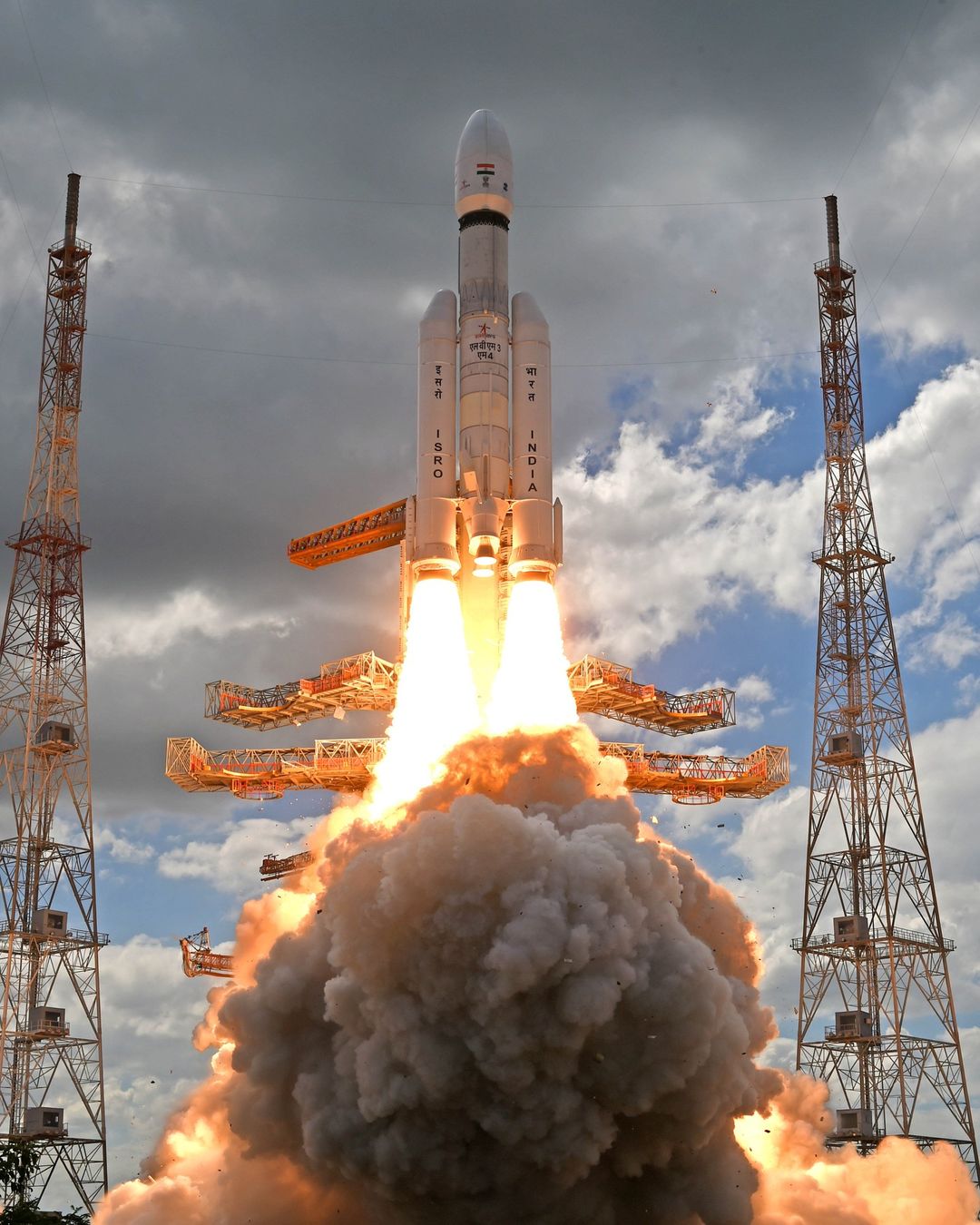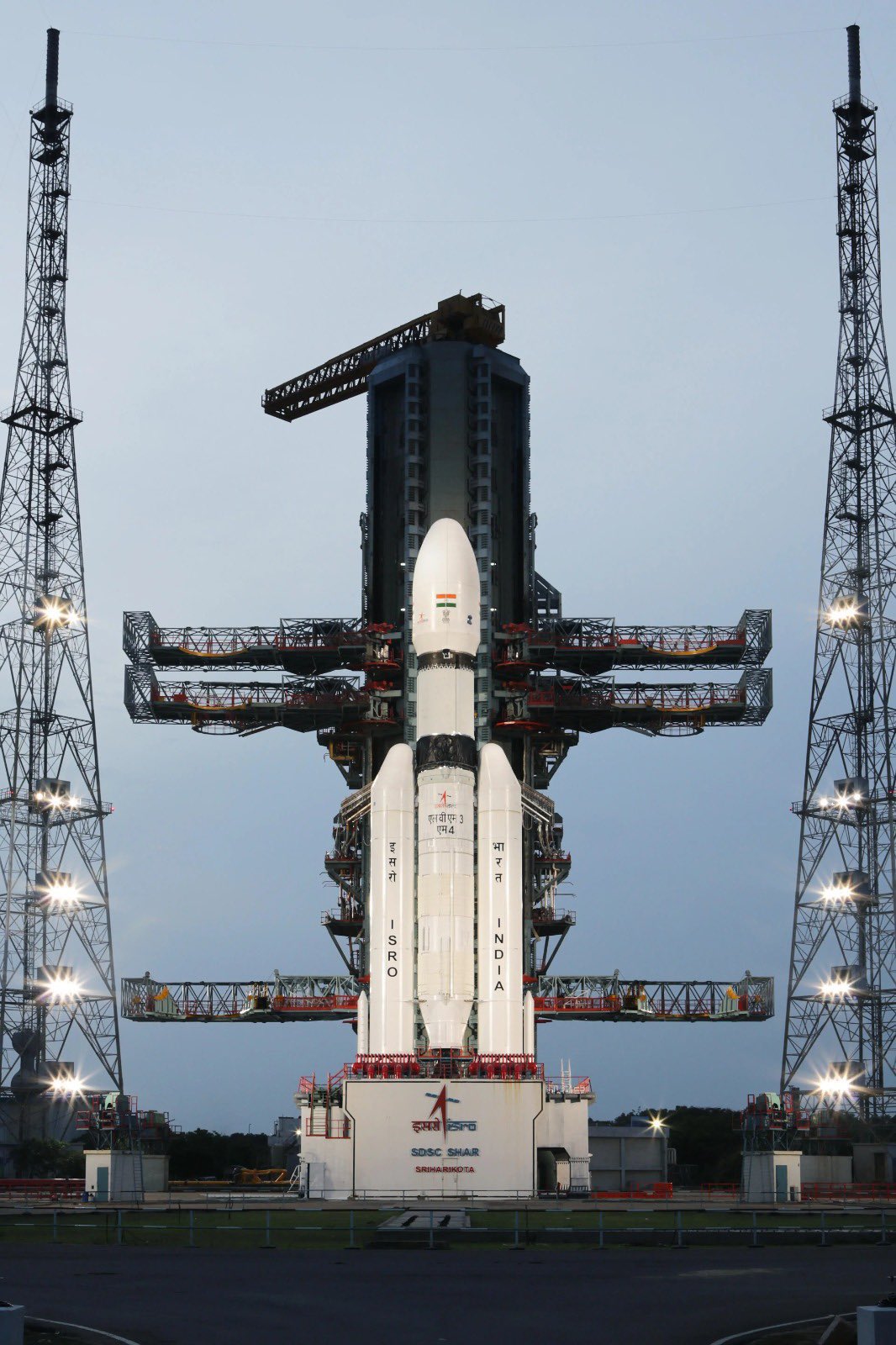By Ashif Shamim
Friday 14 July at 2.35 pm IST, the dreams and aspirations of an entire nation soared as India’s Chandrayaan-3 took off from Sriharikota, Andhra Pradesh. As the mission gets closer to achieving its objectives, it will elevate India to the esteemed position of being the fourth country to successfully touch down on the lunar surface.
Excitement and anticipation were building as India’s space agency, the Indian Space Research Organisation (ISRO), prepared for the highly anticipated launch of Chandrayaan-3. This mission marks the country’s third lunar exploration endeavour, aimed at furthering our understanding of the Moon and paving the way for future scientific breakthroughs.
As the final countdown was underway, scientists and space enthusiasts around the world eagerly awaited this momentous event. With significant developments and meticulous planning, India’s highly anticipated Chandrayaan-3 carries with it the aspirations of an entire nation.
The Mission: A Brief Overview
Chandrayaan-3 is the third lunar mission by ISRO, the premier space agency of India. Building upon the successes and lessons learned from Chandrayaan-1 and Chandrayaan-2, this ambitious mission is designed to accomplish even greater feats of scientific discovery and exploration.
One of the primary objectives of Chandrayaan-3 is to land a rover on the lunar surface. The rover will be equipped with advanced scientific instruments and cameras to analyze the Moon’s geological characteristics, map its topography, and study the presence of water molecules. The data collected from this mission will contribute to our understanding of the Moon’s origin, evolution, and potential for supporting future human missions.
Latest Developments and Progress
ISRO has been actively working on the development and preparation of Chandrayaan-3 since the launch of Chandrayaan-2 in July 2019. The organisation has been focused on rectifying the technical issues that led to the partial failure of Chandrayaan-2’s lander, Vikram.
“The main lacuna in the last Chandrayaan-2 mission was that there were off-nominal conditions that were initiated in the system. Everything was not nominal. And the craft was not able to handle the off-nominal condition for a safe landing,” ISRO Chief S Somnath stated in a recent interview.

According to Mr Somanath, the mission design of Chandrayaan-3 ensures a successful landing even in the event of component failures. Various potential scenarios such as sensor malfunction, engine failure, algorithmic issues, and calculation errors were carefully analysed, and corresponding measures were devised to overcome these challenges.
Notably, ISRO has been collaborating with international partners to enhance the mission’s capabilities and leverage expertise from around the world. Partnerships with various space agencies and scientific institutions have allowed India to access advanced technologies, expertise, and support in areas such as navigation, communication, and payload development.
The Chandrayaan-3 launch vehicle consists of a heavy-lift GSLV Mk III rocket, capable of carrying the mission’s payload into space. This rocket has been successfully used by ISRO in previous missions, ensuring a robust and reliable launch vehicle for Chandrayaan-3.

The Final Countdown begins!
The final countdown represents the culmination of extensive planning, meticulous preparations, and countless hours of hard work by the dedicated team at the Indian Space Research Organisation (ISRO).
During the final countdown, various critical activities take place to ensure a smooth and successful launch. The launch vehicle, GSLV Mk III, undergoes meticulous checks to verify its readiness for the mission. Systems and subsystems are thoroughly tested, including the spacecraft, lander, and rover, to ensure their functionality and reliability in the harsh conditions of space.
At this stage, the mission controllers and engineers closely monitor all parameters, verifying that everything is functioning within the designated parameters. Any last-minute adjustments or corrections are made to ensure optimal performance during the launch sequence.

- Refined Mission Objectives
Chandrayaan-3 has refined its mission objectives based on the lessons learned from the previous Chandrayaan missions. The primary goal remains to successfully land a rover on the lunar surface and conduct extensive scientific experiments and studies. The rover is equipped with advanced instruments to analyse the Moon’s composition, map its terrain, and study the presence of water ice and other resources.
- Improved Technical Readiness
ISRO has dedicated significant efforts to address the technical challenges faced during the previous mission, Chandrayaan-2. Lessons learned from the partial failure of the lander, Vikram, have led to rigorous testing and improvements in various systems and components. The spacecraft and the lander have undergone meticulous reviews, ensuring their readiness for the upcoming launch.
- Collaborative Efforts and International Partnerships
Recognizing the significance of collaboration in space exploration, ISRO has actively sought partnerships with international space agencies and institutions. This collaborative approach has allowed India to access cutting-edge technologies, expertise, and valuable resources. Through these partnerships, Chandrayaan-3 has received support in critical areas such as navigation, communication, and scientific payload development, strengthening the mission’s chances of success.
- Launch Vehicle: GSLV Mk III
Chandrayaan-3 will be propelled into space by the Geosynchronous Satellite Launch Vehicle Mark III (GSLV Mk III), known for its reliability and robustness. The GSLV Mk III, also used in previous Indian missions, has proven its capability to deliver payloads to the intended orbits. This launch vehicle’s track record adds confidence to the final countdown for Chandrayaan-3.
Final Thoughts
The launch of Chandrayaan-3 signifies India’s unwavering commitment to space exploration and its determination to take giant leaps in scientific knowledge and technological capabilities. Through meticulous planning, collaboration with international partners, and rectification of previous technical issues, ISRO has demonstrated its dedication to learning from past experiences and ensuring the success of future missions.
Chandrayaan-3’s ambitious objectives, including the landing of a rover on the lunar surface and comprehensive scientific exploration, hold great promise for advancing our understanding of the Moon’s mysteries. The data and insights gained from this mission will not only contribute to the global scientific community but also lay the groundwork for future human missions to the Moon.
As India shoots for the Moon once again, it solidifies its position as a significant player in the field of space exploration. The country’s ambitious efforts, backed by cutting-edge technology and skilled scientists, pave the way for further advancements in lunar research and inspire the next generation of scientists and engineers.
With the launch of Chandrayaan-3, India showcases its determination to leave an indelible mark on humanity’s journey into space. As the nation’s space program continues to reach new heights, the future looks incredibly bright for both India and the scientific community at large. The world eagerly awaits the successful completion of Chandrayaan-3 and the wealth of knowledge it will bring us from Earth’s closest celestial neighbour.
*****************************************************
Author: Ashif Shamim is an accomplished professional communicator leveraging his extensive knowledge of global events and economic trends to provide insightful analysis and commentary.
An individual, driven by a passion for current affairs, world economy, politics, and social media trends, he continues to make a significant impact in the field, bringing clarity and compelling narratives to complex topics and captivating audiences around the globe.
He can be reached on: LinkedIn, Facebook, Twitter and Instagram
Disclaimer: The opinions expressed within this article are the personal opinions of the author. The Australia Today is not responsible for the accuracy, completeness, suitability, or validity of any information in this article. All information is provided on an as-is basis. The information, facts, or opinions appearing in the article do not reflect the views of The Australia Today and The Australia Today News does not assume any responsibility or liability for the same.
Support Our Journalism
Global Indian Diaspora needs fair, non-hyphenated, and questioning journalism, packed with on-ground reporting. The Australia Today – with exceptional reporters, columnists, and editors – is doing just that. Sustaining this needs support from wonderful readers like you.
Whether you live in Australia, the United Kingdom, Canada, the United States of America, or India you can take a paid subscription by clicking Patreon. Buy an annual ‘The Australia Today Membership’ to support independent journalism and get special benefits.





